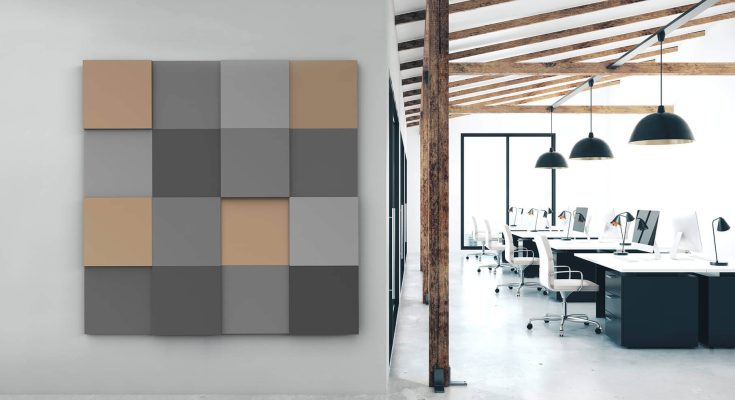In interiors, beige, white, and beige have had a good run. They’re safe, soothing, and easy to match. But if your space is starting to feel a bit… uninspired, it might be time to dial up the colour. And no, you don’t need to repaint the entire flat or splash out on a bright velvet sofa.
One of the easiest and most effective ways to bring personality into your interiors is colourful Pantone sound panels.
Yes, acoustic design has had a glow-up. These panels aren’t just about function anymore; they’re now a full-on style feature. And with the wide spectrum of Pantone-inspired hues available today, you can treat your walls to a colour refresh and enjoy better acoustics at the same time.
Here’s how to do it confidently, creatively, and without clashing with the rest of your home.
Why Use Colourful Sound Panels in the First Place?
Sound panels are no longer those bland grey slabs you stick in a music studio. Today’s sound panel options are colourful, modular, design-driven, and surprisingly chic.
They reduce echo, soften noise, and create a more comfortable living or working environment. But when do you go for colour? They also:
- Act as wall art or feature pieces
- Add contrast or complement your existing palette
- Help define zones in open-plan layouts
- Bring playfulness or elegance, depending on the tone
Think of them as function meeting flair—especially perfect for flats, home offices, or creative spaces.
1. Match the Mood of the Room with the Right Pantone Tones
Colour is emotional. The shades you choose will set the tone (pun intended) for how a space feels.
Here’s a quick breakdown:
- Soft blues and cool greys: Calming, perfect for bedrooms or meditation zones
- Earthy greens and warm terracottas: Grounding and cosy for living rooms
- Pale yellows or peach tones: Inviting and cheerful for kitchens or dining spaces
- Bold reds and deep navies: Rich and dramatic for media rooms or accent walls
- Muted mauves or dusty rose: Elegant and on-trend for dressing rooms or hallways
Tip: Use Pantone’s annual colour forecasts for inspiration—or go for tones that resonate personally.
2. Create Visual Rhythm with Modular Layouts
Most Pantone-inspired sound panels come in square, hexagonal, or rectangular formats, which means you can mix, match, and rearrange them like tiles.
Design ideas to try:
- A checkerboard of contrasting colours for playful energy
- An ombre fade from dark to light across a long wall
- A randomised scatter of tones in a shared workspace
- Vertical stripes or a panelled headboard wall in the bedroom
With acoustic panels, you’re not just decorating—you’re curating movement and flow.
3. Use Colour to Break Up Large Walls
In open-plan homes or rooms with expansive white walls, a splash of colour can instantly create focus. A wall-mounted installation of Pantone panels can:
- Visually anchor your sofa or media unit
- Define your workspace within a lounge or studio
- Add interest to an otherwise forgettable hallway or corner
Best part? They’re non-permanent. If you want to switch up your palette later, you can swap panels out without fuss.
4. Blend Function and Aesthetics in Multi-Use Rooms
If you’ve got a space doing double duty (say, a living room that’s also a study), colour-coded sound panels can help differentiate the zones.
- Try soft greys and navy where you work, and bring in mustard or sage green by the seating area.
- In kids’ rooms, use bright panels for play zones and calmer tones near the reading nook.
- In creative studios, mix vibrant tones to stimulate inspiration, and add a mood board right on top.
It’s zoning without the clutter of dividers or additional furniture.
5. Tie the Panels into Your Existing Colour Scheme
If your home already has a defined palette, sound panels can be used to amplify or echo those tones.
- Match your sofa cushions or curtains
- Pull from a piece of artwork in the same room
- Choose panels that complement your flooring or cabinetry
Think of them like scatter cushions for your walls—easy to swap, easy to love.
6. Don’t Be Afraid to Clash (a Little)
Too much matchy-matchy can feel flat. If you want to make a statement, embrace contrast:
- Teal panels in an otherwise neutral kitchen
- Blush pinks against dark charcoal walls
- Forest green panels on warm wood-toned walls
A little tension in colour can go a long way in making your home feel intentional and alive.
Final Thoughts: Design That Sounds—and Looks—Brilliant
Pantone sound panels are proof that you don’t have to sacrifice style for practicality. In fact, they’re the perfect middle ground for anyone looking to elevate their space’s look while also improving the feel of the environment.
Whether you’re creating a work-from-home sanctuary, updating your lounge, or simply tired of blank walls and bland palettes, colourful sound panels offer an exciting, low-commitment upgrade.
So go beyond beige. Be bold. Let your walls speak volumes, quietly.


